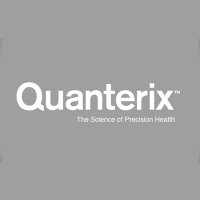
Quanterix Corp
NASDAQ:QTRX


| US |

|
Johnson & Johnson
NYSE:JNJ
|
Pharmaceuticals
|
| US |

|
Berkshire Hathaway Inc
NYSE:BRK.A
|
Financial Services
|
| US |

|
Bank of America Corp
NYSE:BAC
|
Banking
|
| US |

|
Mastercard Inc
NYSE:MA
|
Technology
|
| US |

|
UnitedHealth Group Inc
NYSE:UNH
|
Health Care
|
| US |

|
Exxon Mobil Corp
NYSE:XOM
|
Energy
|
| US |

|
Pfizer Inc
NYSE:PFE
|
Pharmaceuticals
|
| US |

|
Palantir Technologies Inc
NYSE:PLTR
|
Technology
|
| US |

|
Nike Inc
NYSE:NKE
|
Textiles, Apparel & Luxury Goods
|
| US |

|
Visa Inc
NYSE:V
|
Technology
|
| CN |

|
Alibaba Group Holding Ltd
NYSE:BABA
|
Retail
|
| US |

|
3M Co
NYSE:MMM
|
Industrial Conglomerates
|
| US |

|
JPMorgan Chase & Co
NYSE:JPM
|
Banking
|
| US |

|
Coca-Cola Co
NYSE:KO
|
Beverages
|
| US |

|
Walmart Inc
NYSE:WMT
|
Retail
|
| US |

|
Verizon Communications Inc
NYSE:VZ
|
Telecommunication
|
Utilize notes to systematically review your investment decisions. By reflecting on past outcomes, you can discern effective strategies and identify those that underperformed. This continuous feedback loop enables you to adapt and refine your approach, optimizing for future success.
Each note serves as a learning point, offering insights into your decision-making processes. Over time, you'll accumulate a personalized database of knowledge, enhancing your ability to make informed decisions quickly and effectively.
With a comprehensive record of your investment history at your fingertips, you can compare current opportunities against past experiences. This not only bolsters your confidence but also ensures that each decision is grounded in a well-documented rationale.
Do you really want to delete this note?
This action cannot be undone.

| 52 Week Range |
9.99
28.28
|
| Price Target |
|
We'll email you a reminder when the closing price reaches USD.
Choose the stock you wish to monitor with a price alert.

|
Johnson & Johnson
NYSE:JNJ
|
US |

|
Berkshire Hathaway Inc
NYSE:BRK.A
|
US |

|
Bank of America Corp
NYSE:BAC
|
US |

|
Mastercard Inc
NYSE:MA
|
US |

|
UnitedHealth Group Inc
NYSE:UNH
|
US |

|
Exxon Mobil Corp
NYSE:XOM
|
US |

|
Pfizer Inc
NYSE:PFE
|
US |

|
Palantir Technologies Inc
NYSE:PLTR
|
US |

|
Nike Inc
NYSE:NKE
|
US |

|
Visa Inc
NYSE:V
|
US |

|
Alibaba Group Holding Ltd
NYSE:BABA
|
CN |

|
3M Co
NYSE:MMM
|
US |

|
JPMorgan Chase & Co
NYSE:JPM
|
US |

|
Coca-Cola Co
NYSE:KO
|
US |

|
Walmart Inc
NYSE:WMT
|
US |

|
Verizon Communications Inc
NYSE:VZ
|
US |
This alert will be permanently deleted.
 Quanterix Corp
Quanterix Corp
Quanterix Corp
Quanterix Corp. engages in the development of ultra-sensitive digital immunoassay platform that advances precision health for life sciences research and diagnostics. The company is headquartered in Billerica, Massachusetts and currently employs 460 full-time employees. The company went IPO on 2017-12-07. The firm is engaged in developing ultra-sensitive digital immunoassay platforms that advance precision health for life sciences research and diagnostics. Its platforms are based on its digital Simoa detection technology. Its Simoa bead-based and planar array platforms enable customers to reliably detect protein biomarkers at extremely low concentrations in blood, serum and other fluids. Its products include HD-X Analyzer, SR-X Biomarker Detection System, SP-X Imaging and Analysis System, and 2470 Arrayer. The company also supplies NF-Light antibodies and ELISA kits, which offer solutions for the detection of neurofilament light (Nf-L) for the development of therapeutics and diagnostics for neurodegenerative conditions. Its portfolio of available kits spans multiple therapeutic areas, including cardiology, infectious disease, inflammation, neurology, and oncology. The company provides services through its Simoa Accelerator Laboratory.

Quanterix Corp. engages in the development of ultra-sensitive digital immunoassay platform that advances precision health for life sciences research and diagnostics. The company is headquartered in Billerica, Massachusetts and currently employs 460 full-time employees. The company went IPO on 2017-12-07. The firm is engaged in developing ultra-sensitive digital immunoassay platforms that advance precision health for life sciences research and diagnostics. Its platforms are based on its digital Simoa detection technology. Its Simoa bead-based and planar array platforms enable customers to reliably detect protein biomarkers at extremely low concentrations in blood, serum and other fluids. Its products include HD-X Analyzer, SR-X Biomarker Detection System, SP-X Imaging and Analysis System, and 2470 Arrayer. The company also supplies NF-Light antibodies and ELISA kits, which offer solutions for the detection of neurofilament light (Nf-L) for the development of therapeutics and diagnostics for neurodegenerative conditions. Its portfolio of available kits spans multiple therapeutic areas, including cardiology, infectious disease, inflammation, neurology, and oncology. The company provides services through its Simoa Accelerator Laboratory.





























 You don't have any saved screeners yet
You don't have any saved screeners yet
